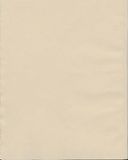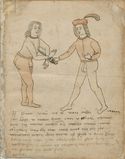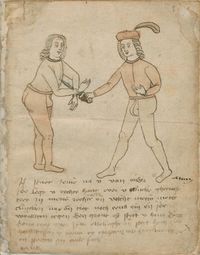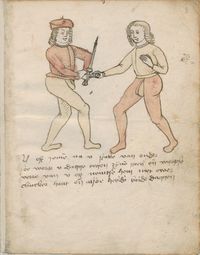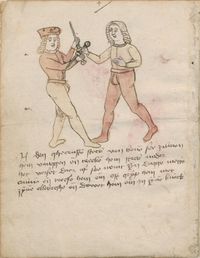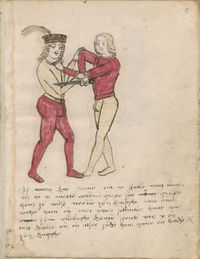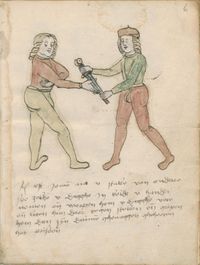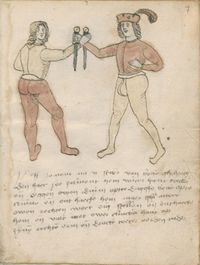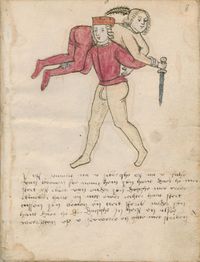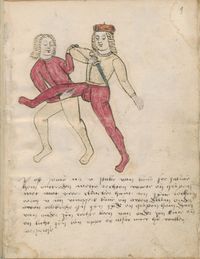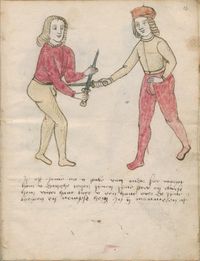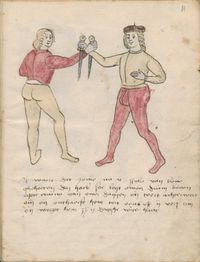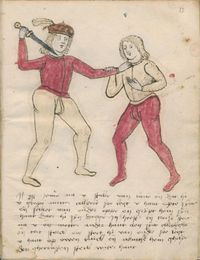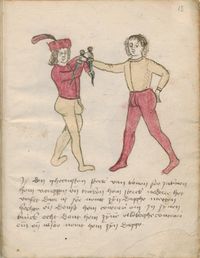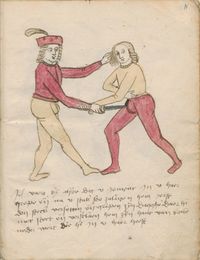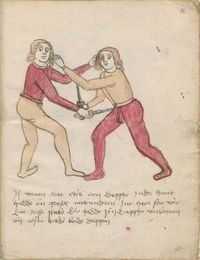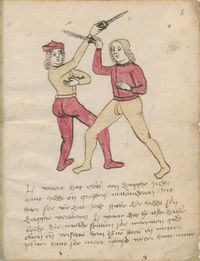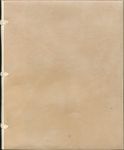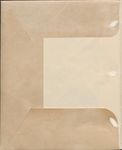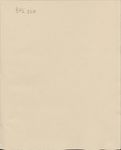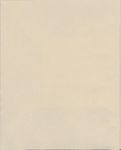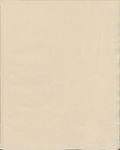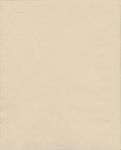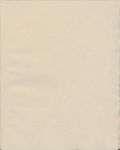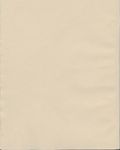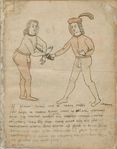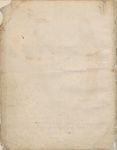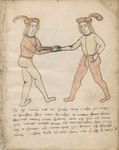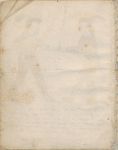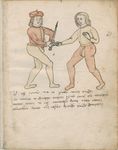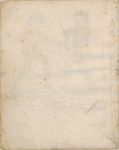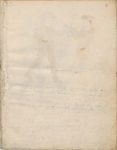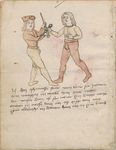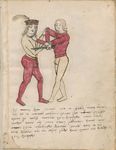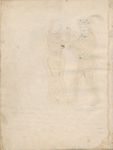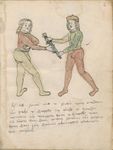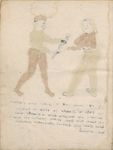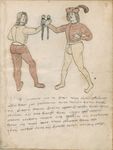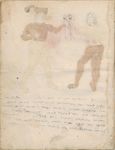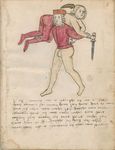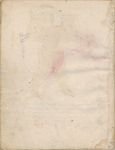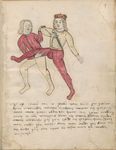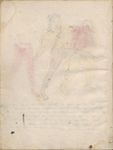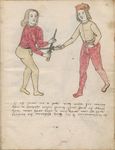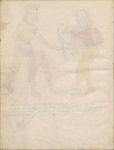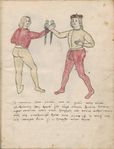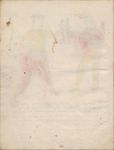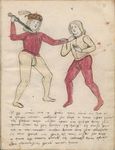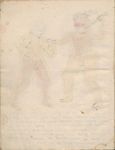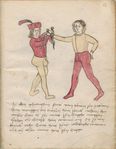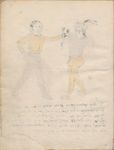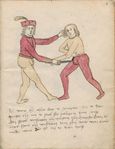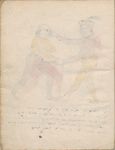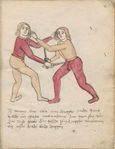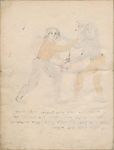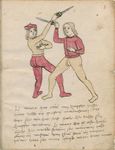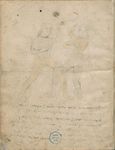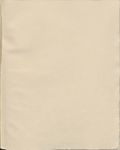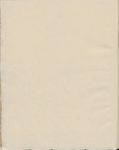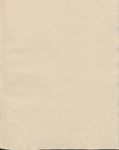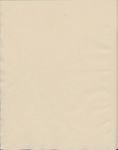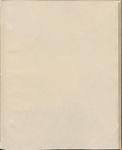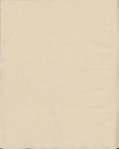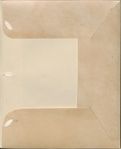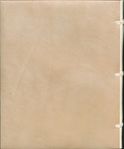|
|
You are not currently logged in. Are you accessing the unsecure (http) portal? Click here to switch to the secure portal. |
Difference between revisions of "Vechtboek (MS BPL.3281)"
| Line 38: | Line 38: | ||
| below = | | below = | ||
}} | }} | ||
| − | The '''MS BPL 3281''' is a fragmentary 16th century [[nationality::Dutch]] [[fencing manual]] | + | The '''MS BPL 3281''' is a fragmentary 16th century [[nationality::Dutch]] [[fencing manual]] created in Belgium in the 1520s.<ref>According to the [https://socrates.leidenuniv.nl/R/-?func=dbin-jump-full&object_id=2977867 library catalog entry].</ref> It resides in the holdings of the [[Universiteitsbibliotheek Leiden]] in Leiden, Netherlands. The techniques in this manuscript are consistent with those of the [[Nuremberg Group|Nuremberg manuscript complex]] and the art style matches part A of the [[Codex Wallerstein (Cod.I.6.4°.2)|Codex Wallerstein]] (the earliest member of that complex), but its relationship to this tradition remains uncertain. |
== Provenance == | == Provenance == | ||
Revision as of 03:53, 3 February 2014
| Vechtboek | |||||
|---|---|---|---|---|---|
| MS BPL.3281, Universiteitsbibliotheek Leiden Leiden, Netherlands | |||||
| |||||
| |||||
| Type | Fencing manual | ||||
| Date | 1520s | ||||
| Place of origin | Belgium (western Netherlands) | ||||
| Language(s) | Middle Dutch | ||||
| Author(s) | Unknown | ||||
| Illustrator(s) | Unknown | ||||
| Material | Paper, with a modern binding | ||||
| Size | 16 folia | ||||
| Format | Single-sided; one illustration per page, with text below | ||||
| Script | Bastarda | ||||
| External data | Library catalog entry | ||||
| Treatise scans | Digital scans (2800x3500) | ||||
The MS BPL 3281 is a fragmentary 16th century Dutch fencing manual created in Belgium in the 1520s.[1] It resides in the holdings of the Universiteitsbibliotheek Leiden in Leiden, Netherlands. The techniques in this manuscript are consistent with those of the Nuremberg manuscript complex and the art style matches part A of the Codex Wallerstein (the earliest member of that complex), but its relationship to this tradition remains uncertain.
Provenance
Contents
| Folio | Section | |||||||||||||||||||||||||||||||||||||||||||||||||||
|---|---|---|---|---|---|---|---|---|---|---|---|---|---|---|---|---|---|---|---|---|---|---|---|---|---|---|---|---|---|---|---|---|---|---|---|---|---|---|---|---|---|---|---|---|---|---|---|---|---|---|---|---|
| [Three blank leaves] | ||||||||||||||||||||||||||||||||||||||||||||||||||||
| 1r - 16r | Anonymous dagger treatise
| |||||||||||||||||||||||||||||||||||||||||||||||||||
| [Three blank leaves] |
Gallery
Additional Resources
References
- ↑ According to the library catalog entry.
- ↑ It is unclear what “niet en” means here. It could imply that the thumb is “not in”, or that it is “not one”, i.e. not alone–supported by the other hand.
- ↑ A literal translation of “cruine” would be “crown”.
- ↑ 4.0 4.1 A more literal translation would be “unhook”.
- ↑ The meaning of the Dutch word “striken” is unclear in this context. Here, it is interpreted as “strikken”; “snares”.
- ↑ This could be either “by” or “with” depending on the meaning of the word “hechte”. See the following note.
- ↑ This word is hard to make out in the manuscript. “hechte” could alternatively mean “close”. Possible alternatives for “hechte” are “rechte”, meaning “right” (i.e. with the right hand, though this would be unlikely as the right hand is trapped), or “hoch(t)e”, meaning “high” or “height”. Finally, the hilt could be what is intended.

